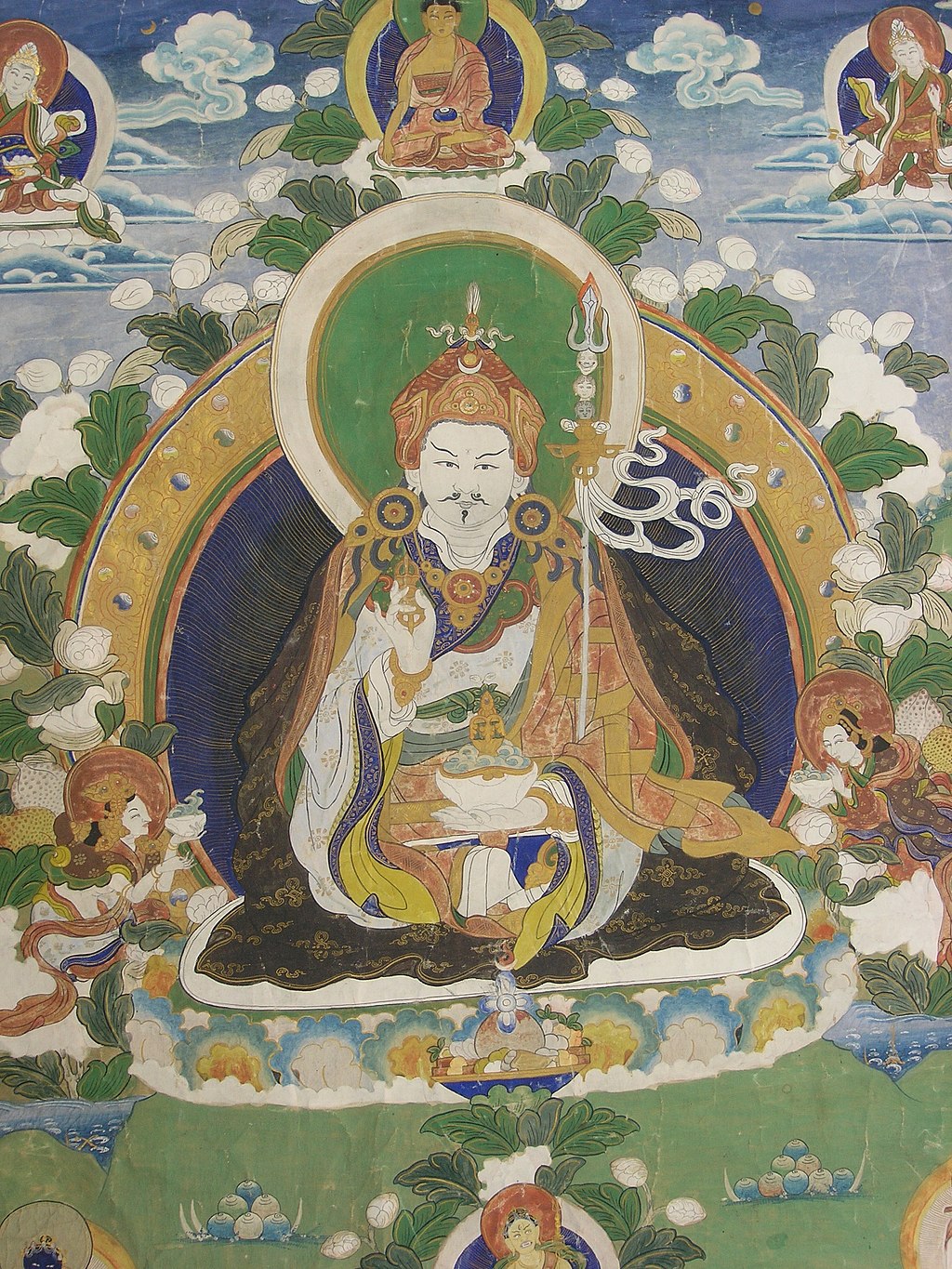In order to understand Bhutan, it is important to understand the men who shaped and founded Bhutan as we know today.
Much of Bhutan’s recorded history begins in the 8th century, with the arrival of Guru Padmasambhava, who is credited to have brought Buddhism to Bhutan. He is also known as Guru Rinpoche, meaning the precious teacher.
Before Buddhism, the people in Bhutan were mostly practicing Bon. Bon is an indigenous religious tradition. Elements of it remain to this day, such as making offerings to local deities.
Guru Padmasambhava
Bhutanese people consider Guru Rinpoche as the second Buddha. Guru Rinpoche founded the Nyingmapa Sect, which is a branch of Mahayana Buddhism. Mahayana Buddhism is considered one of the three main existing branches of Buddhism.
Guru Rinpoche is said to have blessed many sites across the country. Some of these sites include the Tiger’s Nest Monastery–Taktsang, Singye Dzong, and Mebartsho in Bumthang. Guru blessed Mebartsho with many “treasures” when a terton (treasure discoverer) in the 15th century unearthed much of it. Today, the site is considered holy, and many people visit it.
Additionally, Guru Rinpoche is considered a great tantric master and teacher. He is believed to have subdued many demons and blessed places previously cursed. Schools across Bhutan have adopted Guru’s belief that states that each one of us contains an inner goodness–treasure.
Zhabdrung‘s Arrival
Zhabdrung came to Bhutan in the 16th century, fleeing religious persecution in Ralung, Tibet. He belonged to the Drukpa Kagyu School, which is the prevailing state religion in present-day Bhutan.
Zhabdrung’s arrival was predicted by Guru Rinpoche.
The evening before embarking on his journey, he experienced a dream where he followed a sizable raven towards the south, eventually reaching an unfamiliar destination. The raven was identified as his protective deity, the Raven-headed Mahakala. Upon arriving in Bhutan, he was welcomed by Lamas and leaders from the Gasa Region.
Prior to Zhabdrung’s arrival, Bhutan was ruled by various tribes.
Zhabdrung unified the country and laid the foundations for modern Bhutan. He established a Dual System of Government where the Je Khenpo handles religious matters and the Druk Desi takes care of civil affairs. While facing challenges typical of any political system, it marked a noteworthy advancement in the consolidation and stability of the nation.
First Contact with the British
Following Zhabdrung’s death, Bhutan faced an internal crisis and heightened tensions with the British East India Company (BEIC). One particular incident that set off Bhutan-British relations is the dispute of Cooch Behar.
There were minimal interactions between the British and the Bhutanese until 1765. However, in that year, the British East India Company became entangled in a conflict over the succession to the throne of ‘Cooch Behar situated to the south of Bhutan. The Bhutanese were actively engaged in this dispute as well.
Bhutanese forces gained control of Cooch Behar leading the state’s Raja to seek BEIC assistance, resulting in the expulsion of the Bhutanese. Subsequently, the British independently attacked, and despite a peace treaty, border raids persisted, culminating in Bhutan’s defeat in the Duar War.
Notwithstanding, the Treaty of Sinchula was signed in 1865. It marked the end of hostilities.

Back in Bhutan, civil wars erupted due to conflicts in Paro and Trongsa Valley. Ugyen Wangchuck, Trongsa Penlop, emerged victorious, ending internal strife. In 1907, representatives elected Ugyen Wangchuck as the king, initiating the Wangchuck dynasty. The 1910 Treaty of Punakha with the British ensured non-interference in Bhutan’s internal affairs, conditional on the king accepting British counsel on external matters.
In summary, Bhutan’s history unfolds with the arrival of Guru Padmasambhava, shaping the nation’s spiritual and cultural fabric. Zhabdrung’s 16th-century unification efforts laid the foundation for modern Bhutan. Encounters with the British led to conflicts, resolved by the Treaty of Sinchula. Ugyen Wangchuck’s ascent in 1907 marked the beginning of the Wangchuck dynasty. Despite challenges, Bhutan has preserved its unique identity, blending spiritual heritage and strategic governance for enduring peace and prosperity.
Book your trip to Bhutan today! Contact us at [email protected] or call +975 1711-2338 any time, anywhere!


